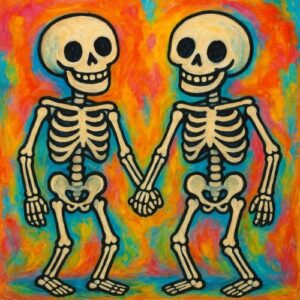Studying Musculoskeletal Anatomy for Massage!
Written by Kris Will
Bones, landmarks and muscles are the life’s blood of Massage Therapists. Learning the names, locations and habits of each bone and muscle is like making life-long friends with the body. How do we make friends with the 110 Skeletal muscles that our students learn in the Anatomy class? The same way we get to know our best friends! Curiosity and interest in their lives, time spent hanging out together, doing activities together and reminiscing.
What does that look like when we are studying Anatomy at the Colorado School of Healing Arts? As a long-time teacher of Anatomy, I’ve got plenty of tips to share and as you may be able to tell from the analogy above and one way to approach learning anatomy is by personifying the muscles and telling their stories. After all, the muscles tell the stories of our clients, and through the tales that they tell us, we can meet our clients where they are and invite both them and their muscles to weave a new narrative, letting go of tension and embracing the relaxation and serenity offered by Massage Therapy.
Anatomical Success looks like:

- Curiosity – Understanding the WHY of Anatomy for Massage Therapists. Asking questions to clarify, to connect and to explore what you are learning. And there are NO “stupid” questions.
- Time Spent together – Anatomy requires daily studying. It may only be 20 minutes per day, it may be 3 hours a day depending on the topic and how our brains absorb information.
- Doing activities together – Anatomy becomes part of our long-term memory when we actively engage with it. Touch a skeleton, make contact with your own muscle. Say the Latin/Greek terms out loud, teach them to someone else, and do the action of each muscle and joint.
- Reminiscing – actively recall what you learned, quiz yourself and your fellow students, use flash cards or make up a song and dance to express what you have learned

